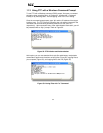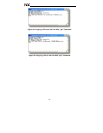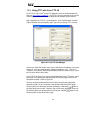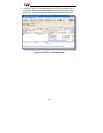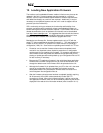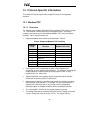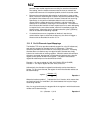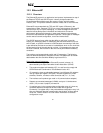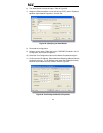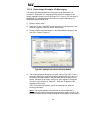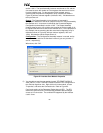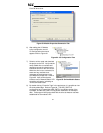
61
ICC
13.2 Ethernet/IP
13.2.1 Overview
The Ethernet/IP protocol is an application-level protocol implemented on top of
the Ethernet TCP/IP and UDP/IP layers. It shares its object model with
ControlNet and DeviceNet through the common Control and Information
Protocol (CIP). This protocol allows the transfer of data and I/O over Ethernet.
Ethernet/IP incorporates both the TCP and UDP layers of Ethernet in the
transmission of data. Because TCP/IP is a point-to-point topology, Ethernet/IP
uses this layer only for explicit messaging; i.e. those messages in which the
data field carries both protocol information and instructions for service
performance. With explicit messaging, nodes must interpret each message,
execute the requested task and generate responses. These types of messages
can be used to transmit configuration, control and monitor data.
The UDP/IP protocol layer, which has the ability to multi-cast, is used for
implicit (I/O) messaging. With I/O messaging, the data field contains only real-
time I/O data; no protocol information is sent because the meaning of the data
is pre-defined at the time the connection is established, which in turn minimizes
the processing time of the node during run-time. I/O messages are short and
have low overhead, which allows for the time-critical performance needed by
controllers.
The interface card supports both explicit and I/O messaging. The following
sections demonstrate specific examples of how to use Ethernet/IP to transfer
data between the drive and Allen-Bradley Logix-brand PLCs.
Some other notes of interest are:
• The interface card supports the Ethernet/IP protocol (release 1.0),
administered by the Open DeviceNet Vendor Association (ODVA).
• This product has been self-tested by ICC, Inc. and found to comply with
ODVA Ethernet/IP Conformance Test Software Version A-5.
• I/O connection sizes are adjustable between 0 and 64 bytes (32 registers
max @ 2 bytes per register = 64 bytes). Because registers are 16-bit
elements, however, connection sizes cannot be odd (i.e. 1, 3, 5 etc.)
• The interface card’s product type code is 12 (communications adapter.)
• Supports unconnected messages (UCMM), and up to 16 simultaneous
class 1 (I/O) or class 3 (explicit) connections.
• If a register entry in the consumed data configuration array is 0, then any
consumed data that corresponds to that location will be ignored.
Conversely, if a register entry in the produced data configuration array is 0,
then any produced data that corresponds to that location will be a default
value of 0. Refer to section 10.8.3 for further information on the data
configuration arrays.



